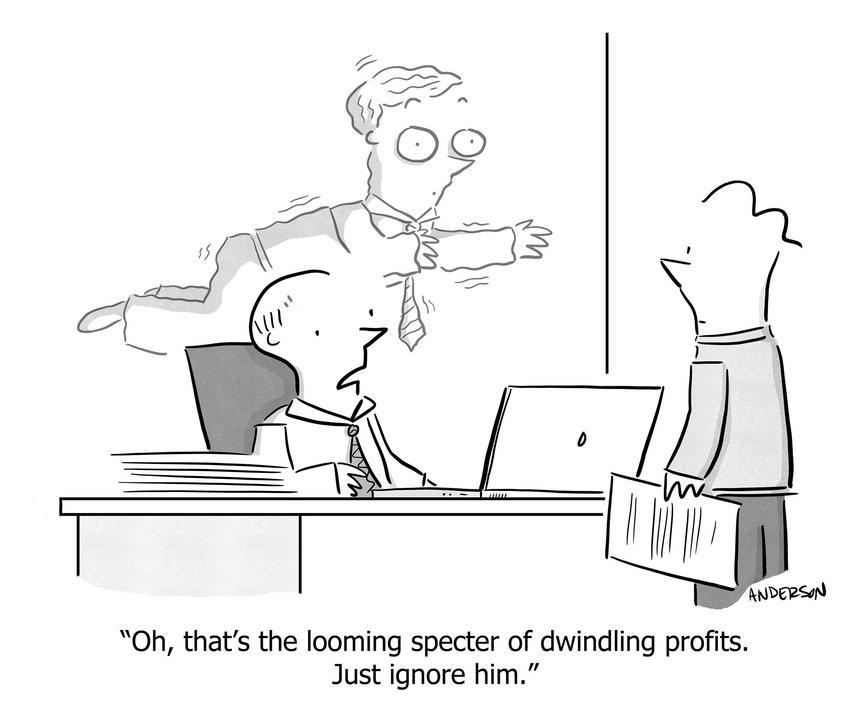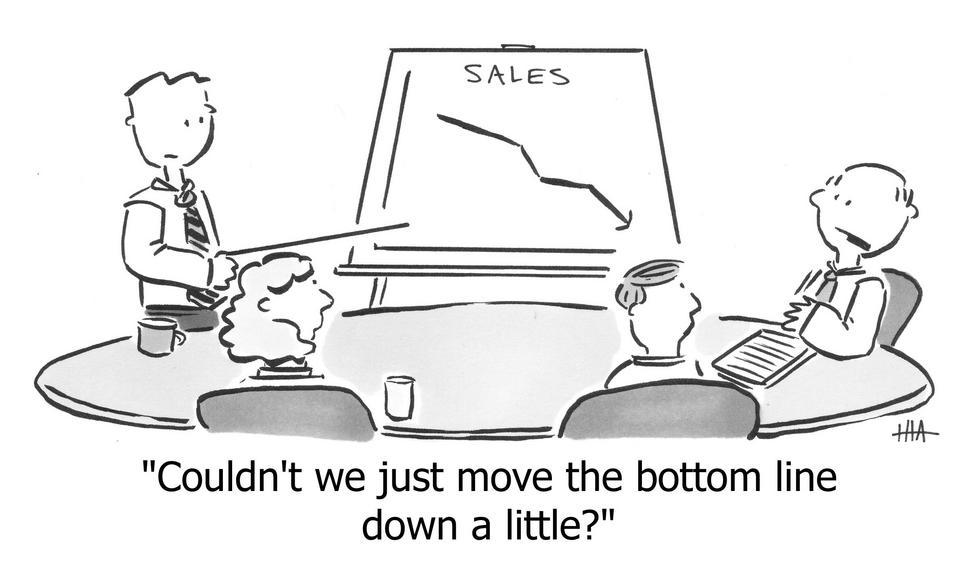Why it’s nice to compete against a large, profitable company
A big, profitable company seems like the hardest thing for a small company to compete against. They have everything: money, brand, momentum, existing customers, press, product teams, distribution channels, expertise, market insight, analysts, sales offices, product features, and, scariest of all, a working business model.
All a little startup has is a decent idea and extremely greasy elbows.
But David has a clear path to slaying Goliath. The insight is: The profitable revenue stream is a prison. It’s the Achilles heel that allows the little guy to win.
A company with a large, profitable, growing revenue stream betrays facts useful to a startup:
- There’s a huge market to be had (else it wouldn’t be large and growing).
- This market is willing to pay far more than cost for this product (else profits wouldn’t be generated).
- This abundance will last for a while (large, profitable businesses typically die a slow, sagging death rather than disappearing in a flash).
This means the market is ripe for an Innovator’s Dilemma-style disruption. A startup with new cost structures, new technology, and new ideas can be competitive at or possibly even
the price, even if the product is merely just-good-enough.
But wait! The big profitable company can just lower prices, thereby removing the main competitive advantage from the upstart, right? Wrong. The big profitable revenue stream is the goose that’s laying the golden eggs. The goal of a large company is to protect the profit stream at all costs, even if that means giving up on innovation or speed. The current valuation of the company is based on continued growth of revenue and earnings, not erosion due to ankle-biters. Watch how fast your stock plummets when Wall Street thinks your future earnings are in jeopardy.
Don’t forget: Small changes in top-line revenue create massive changes in profitability. A business with a 20% profit margin is very healthy. If you lower top-line prices by 20%, your costs don’t magically decrease 20%, so now your profits are 0%. So if a startup cuts prices by 50% or 80%, the big company cannot chase. In fact, even reducing top-line by a measly 10% still cuts profits in half—a penalty too massive to endure, for an effect (slightly lower prices) which won’t materially change the price conversation amongst customers.
Therefore, a large company asks: “If we’re going to lose on price to the low end of the market, how can we charge even more on the top end, to make up for that lost business?”
Will that strategy work? It might! Either way, the new startup can grab of that big company’s low-end market share and still be profitable, because it started with a much lower cost structure, with new ideas, new tech, and a new business model.
But wait! Perhaps the big company will sacrifice earnings for growth? Not anymore. That’s a young company’s game. In the big-boy and big-girl world of real, at-scale companies, valuation is about total future earnings. Growth is important only because it leads to more earnings, not because it’s “growth for growth’s sake.” That’s the argument a young company uses, when the primary goal is to become dominant in a market before someone else does, setting up decades of future profitability.
A final word of caution. All this applies only if you’re attacking the product line that generates the massive profits. If you’re attacking a loss-leader, the situation is reversed.
Big, profitable companies often have other lines of business which are unprofitable, sometimes extremely so. The profitable business unit funds the others. For example, Google’s profitable search business funds GMail. Amazon’s retail business funded AWS, and now that AWS is closing in on $10B in annualized revenue with 20% profit margins, it’s funding other projects as we speak.
Attacking a profitable business on its loss-leaders is a terrible strategy, because it can use all its powers against you, plus orders of magnitude more dollars, and not care about a direct business model to support those decisions. That is a scary competitor—lots of resources and nothing to lose!
For example, Microsoft decided to make Internet Explorer a loss-leader against Netscape, and destroyed that company. That began only after Netscape was large and winning, so this wasn’t a strategic error on Netscape’s part, but rather a clear demonstration of the power of a profitable company who doesn’t care about making money in a certain market. On the flip side, Google built a $1B business applications product line (“Docs”) that competes against Microsoft, because in this case “Office” is the profitable line of business that Microsoft can’t impinge.
So, competing against a large, profitable, growing business might be the smartest thing you can do! Just make sure you’re hitting them where they’re fat, not where they’re able to beat you with their size.
https://longform.asmartbear.com/compete-on-profit/
© 2007-2025 Jason Cohen
 @asmartbear
@asmartbear ePub (Kindle)
ePub (Kindle)
 Printable PDF
Printable PDF









